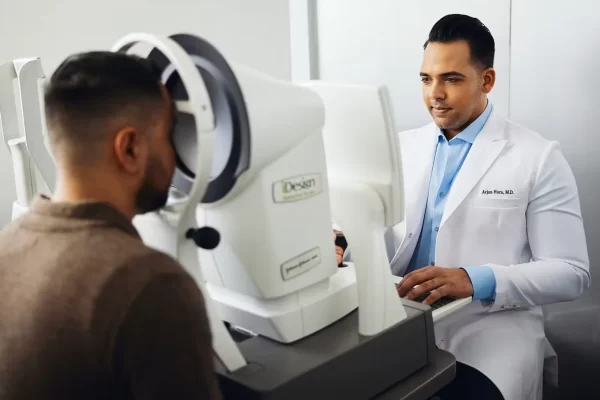In the consistently developing scene of innovation, coordinating biometric data in different areas has introduced another time of accommodation and security. One noticeable region where biometric data is making critical advances is in the domain of work. Associations are progressively embracing biometric data for employment cases, like, time following and even worker enrollment.
While using biometric data holds a monstrous commitment, it is joined by a large group of worries connected with protection, security, and expected abuse. Exploring these difficulties requires a fair and informed approach. In this article, we will dig into the top tips to avoid the drawbacks of biometric data in employment cases.
Figuring out Biometric Data in Employment Cases:
Biometric data includes utilizing extraordinary physical or conduct credits to distinguish people. It can incorporate fingerprints, facial acknowledgement, iris checks, voice examples, and, in any event, composing cadence. In the work setting, biometric data is being utilized for a few purposes, including:
Time and Participation Following:
Biometric frameworks offer a consistent method for following representative work hours and disposing of the requirement for customary time cards or manual log passages.
Access Control:
Biometric access frameworks improve security by guaranteeing that main approved staff can enter confined regions.
Enrollment and Verification:
A few associations use biometric data in an employment case for up-and-comer confirmation during the employing system, intending to check the personality of candidates.
Data Insurance:
Biometric data can likewise act as an extra layer of safety for data access and gadget opening.
Tips to Stay away from Disadvantages in Employment Cases:
The following are the tips to stay away from disadvantages in Employment cases:
Straightforwardness and Informed Assent:
Straightforwardness is the foundation of moral biometric data utilization. Managers should discuss transparently with employees about the assortment, stockpiling, and use of their biometric data. It includes understanding why the data is being gathered, how it will be utilized, where it will be put away, and for how long. Informed consent is similarly basic. Workers ought to have the decision to quit without confronting repercussions. Giving clear data and acquiring consent lays out trust and mitigates the gamble of expected legitimate issues.
Data Security and Encryption:
Security breaks can prompt devastating outcomes, particularly while managing delicate biometric data. To safeguard biometric data, managers should execute strong safety efforts, including encryption. Data should be encoded both during transmission and remember that it is still away. Customary security reviews and weakness appraisals should be directed to recognize and address possible shortcomings in the framework. Multifaceted validation can add a layer of safety; it is fundamentally harder to guarantee unapproved access.
Consistency with Appropriate Regulations and Guidelines:
Various areas and nations have changing regulations and guidelines concerning biometric data on an employment case. Bosses should remain informed about these legitimate necessities and guarantee severe consistency. For example, the European Association’s Overall Data Assurance Guideline (GDPR) forces tough principles on how biometric data can be gathered, handled, and put away. Rebelliousness can bring about serious punishments, discolored standing, and legitimate liabilities.
Restricted Data Assortment:
Gather just the biometric data that is fundamental for the expected reason. Stay away from over-assorting data that may need to be more straightforwardly important. Restricting data assortment diminishes the potential assault surface for breaks and limits how much delicate data should be protected. An unmistakable data maintenance strategy should likewise be laid out to decide how long the gathered data will be held and when it will be safely erased.
Atomization and De-distinguishing proof:
Atomization includes eliminating recognizable data from biometric data before capacity or handling. De-distinguishing proof methods can prevent the data from being lost. Businesses ought to investigate these strategies to upgrade security. By depersonalizing the data, regardless of whether a break happens, the spilt data won’t be straightforwardly attached to individual representatives, lessening the gamble of wholesale fraud or abuse.
Customary Representative Preparation:
Training is an incredible asset in relieving gambles related to biometric data. Ordinary instructional meetings ought to bring issues to light among representatives about the likely dangers and weaknesses of biometric frameworks. Representatives should likewise be taught about the defensive estimates set up and the means they can take to report dubious exercises. A very educated labor force is bound to effectively take part in keeping up with the security of their biometric data.
Free Reviews and Evaluations:
Getting outside specialists for free reviews and appraisals can give an objective assessment of the association’s biometric data frameworks. These reviews can reveal weaknesses or holes that need to be apparent through inside evaluations alone. Outer approval loans believability to the association’s obligation to data insurance and protection.
Secure Data Removal:
The lifecycle of biometric data incorporates its inevitable removal. Businesses should have a distinct convention for safely discarding biometric data when its motivation has been satisfied or when a worker leaves the association. Essentially, erasing data from servers is lacking; appropriate data removal includes delivering lost data. For example, secure cleaning or actual destruction of capacity gadgets can be utilized.
Checking and Occurrence Reaction Plan:
Consistent observation of biometric data frameworks is fundamental to identifying any surprising movement or possible breaks. A viable episode reaction plan should be set up to address and contain any security breaks quickly. The arrangement should frame the moves toward being taken, portray liabilities, and detail correspondence techniques for illuminating impacted parties speedily.
Moral Contemplations:
Morals ought to direct every step of the biometric data execution process. Associations should survey whether the advantages of biometric data use offset the likely dangers. Moral navigation includes finding harmony between the benefits of productivity and precision and conserving individual protection and security.
Conclusion:
Biometric data can upset how organizations deal with their labor force and secure their premises. The reception of this innovation additionally accompanies liabilities to safeguard representative protection and data security. By focusing on straightforwardness, consenting to regulations, restricting data assortment, and zeroing in on worker preparation, associations can tackle the advantages of biometric data while alleviating its hindrances. Offsetting development with moral contemplations guarantees that biometric data in employment cases is an apparatus for progress instead of a wellspring of concern.





